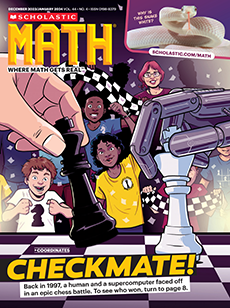Have each student take out a large piece of scrap paper, a pencil, and a ruler. Give students different sets of directions to draw shapes. Have some sets of directions that ensure all students draw the same shape, such as “Draw a square with side lengths of 3 inches,” and other directions that allow for different shapes to be drawn, such as “Draw a right triangle with one side length of 8 centimeters.” Then ask: What ensures that the shapes are the same? What allows them to be different? Were the given constraints easy or difficult to follow?
CCSS: 7.G.A.2, MP3, MP5, MP6
TEKS: 6.8.A
*Additional standards covered in Skill Builders.
